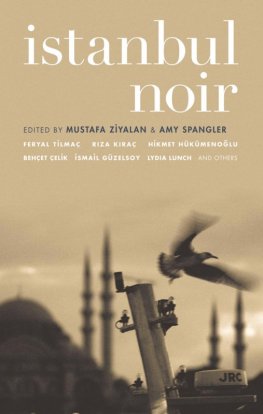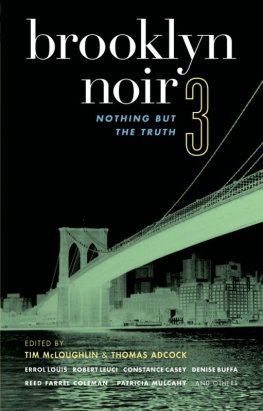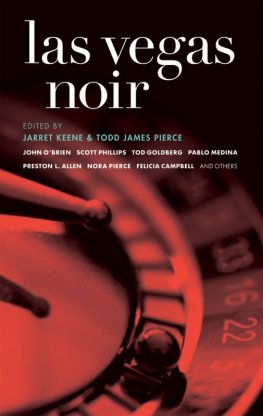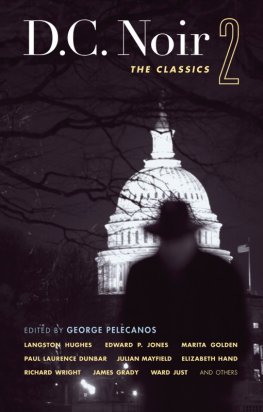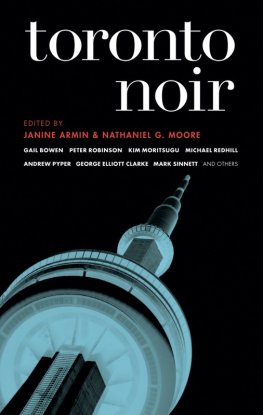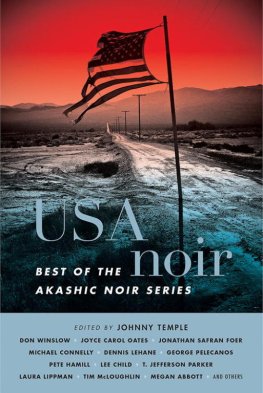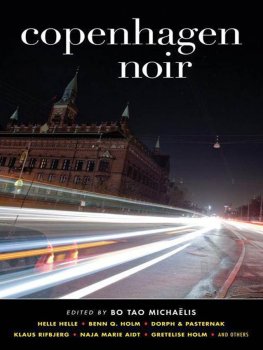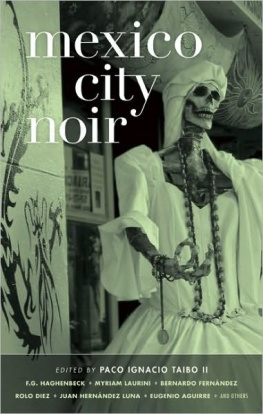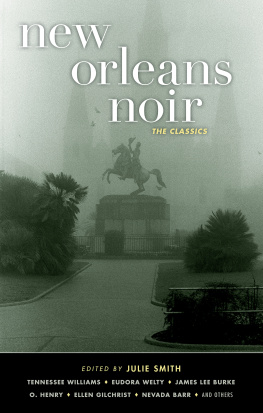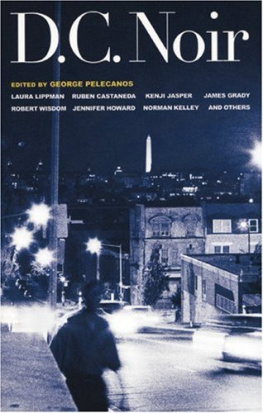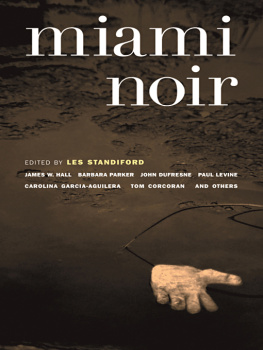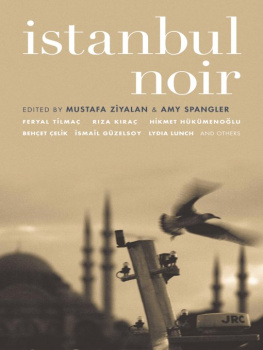Mustafa thanks Pinar Yeilolu for giving him such a good reason to live, and for not so simply bearing with him through those Istanbul Noir times; Cem Mumcu for encouraging him to plunge into the project; Murat Eybolu for making him look good in his photographs; his aunt Nil Taneri for inspiring him with her street map of Istanbul which she autographed for him in 1967; and Refike Trker, his aunt from Kumkap, whose death was the death of Istanbul a little bit.
Amy thanks Dilek Akdemir for, well, everything. She also thanks Tansel Demirel for being a translators best friend; Irene Gates for valuable feedback; dil Aydoan for blatant honesty, bold encouragement, and Foa; participants of the Cunda International Workshop for Translators of Turkish Literature for input and motivation; Tlin Er for constant reassurance; and her mother for reading to her while she was still in the womb.
Both Mustafa and Amy would also like to thank the tough-lovin (but not necessarily tough to love) folks at Akashic; Ayegl zer for the killer map; Deniz Ourlu for the stark and striking cover photo (and Murat Ourlu and Deniz Akkol for helping us find it); and Mel Kenne for making connections.
Introduction
Transgression and the strait: politics, passion, and pain

Istanbul is the place where East meets West, literally. It is, as convention would have it, a meeting point, a crossroads. At the same time, it marks the spot where geography is irreparably rent in two; it is a fissure in the continuum, a seething rupture, so to speak. The only city in the world to lie smack dab at the junction of two continents, Europe and Asia, Istanbul is split down the middle by the Bosphorus Strait, pierced by the Golden Horn, and caressed by the Black and Marmara seas. In short, with her tough love, Mother Nature has pummeled and groomed this place into one of the most stunning geographical locations on earth.
Indeed, Istanbul has been the site of the collision and collusion, of the fracturing and the fusion of cultures, for millennia. Capital of the Eastern Roman (Byzantine) and Ottoman empires, the city formerly known as Byzantium and then Constantinople became Istanbul (incidentally, a word derived from the Greek term for in the city) after being conquered by the Ottomans in 1453. Many Christian Greeks remained and even flourished in Istanbul following Byzantiums defeat at the hands of the Muslim Ottomans. Under Ottoman rule, Istanbul became known as alem-penah refuge of the universe, a haven for myriad religious and ethnic groups. When the Jews were expelled during the Spanish Inquisition in 1492 by the Spanish king, the Ottoman Sultan welcomed them with open arms. As the capital of the Ottoman Empire, Istanbul attracted hundreds of thousands of people for centuries from within the empires vast territories and beyond. In the wake of the empires demise, the Turkish Republic (founded in 1923) has served this legacy well. Waves of immigration, especially since the 1950s, have increased the citys population by more than tenfold: Turks, Kurds, Laz, Alevis, Circassians, Bosnians, Albanians, Macedonians, etc. You get the picture. A mosaic, a melting pot, a vat of oil and water call it what you will, there is no denying that Istanbul has always been ethnically, socially, and religiously cosmopolitan to the core.
As submissions for Istanbul Noir started to come in, it became increasingly clear to us that what was taking shape was not just some collection of dark stories set in old Stamboul, but a rich portrait of the city itself or, at the very least, a particularly revealing series of snapshots. Mind you, it is a city shaped largely by the often vicious ebb and tide of the nations politics. Although Ankara may be the capital of the Republic of Turkey, the truth of the matter is, with a good twelve million people and thus a fifth of its population, Istanbul is the throbbing, often bleeding, heart of the countrys politics. And it shows.
In a tumultuous and notoriously unreliable city where the only constant is instability, one often seeks solace in humor. You will get a dose of that in at least a couple of the stories in this collection. The humor is, we hope, appropriately dark. Rather (but not entirely) antithetical to this humor is a mood that also predominates in several of the pieces: hzn. Like many of the terms youll find in the glossary at the end of this book, hzn is one of those difficult-to-translate concepts integral to the culture of Turkey and the Turkish language, and as a characteristic mood of the inhabitants of this city, several of the stories in this collection are imbued with it. Hzn is a kind of melancholy, a heaviness or a sadness of heart. It is a world pervaded by gray, a state of weariness and hopelessness and lethargy. It is a word for which, arguably, there is no equivalent in English. It is an indescribable mood that you can describe for hours. And in that respect, it is a lot like Istanbul.
A sadomasochistic metropolis in equal measures self-important and self-loathing, Istanbul is rife with contradiction. It is a living conundrum: impossible to pin down and moody as hell. It is raw and human, vibrant and pulsating. It is a city of blood and concrete, a palimpsest of memorials and scars that will not be erased.
Istanbuls history has been marked by the clashing of wills, battling sometimes for life, sometimes for power, often, ultimately, for both. The last several violence-riddled decades in particular have left an indelible mark on the contemporary fabric of the city, not to mention on the minds, bodies, and souls of its people. The knife has cut deep, and the wounds may never completely heal.
This holds true especially for the coup of 1980, which marked a violent and painful rupture in the history of the Turkish Republic. In its efforts to squelch the political left, the state effectively crushed the spirit of an entire generation, extinguishing hope and erecting on its ashes an apolitical society, shaped to the mold of consumerism. An inexhaustible source of heartache and melancholy, bitterness and rage, the involuntary transition from a society fermenting with dissidence to one numbed to the point of docility has had a pervasive impact upon the Turkish people, palpable in many of the stories in this volume.
The political vacuum created by the subjugation of the left was soon filled by the emergence of new forms of nationalism and Islamism. While the history of the Republic is fraught with efforts to galvanize Turkish identity at the expense of others such as the incitement of the Riots of September 67 in 1955, during which Greeks and other non-Muslims and their property in Istanbul suffered widespread attacks, the banning of the Kurdish language, and myriad other discriminatory practices and policies targeting non-Turks in its most recent guise, hysterical ultra-nationalism has become normalized. The Turkish state continues to wage a nearly twenty-five-year war against Kurdish rebels in the southeast, and a psychological war throughout the nation. With displaced Kurds heading west, Istanbul has become rife with ethnic tensions the perfect breeding ground for paranoia. In a state that propagates its own exaltation by means of a ban on insulting Turkishness (Law 301), self-esteem is a shaky business, and targets for venting your own insecurity are easy to come by. Hence the assassination of Hrant Dink, an intrepid Armenian journalist convicted of 301, just two years ago in broad daylight on a lazy day in the heart of Istanbul, nonetheless.
Together with ultra-nationalism, the post-1980 era has also seen the rise of Islamic movements, ranging from the most radical marginal groups, like Hezbollah, to the current ruling party, the moderate conservative Justice and Development Party (AKP). The party of a marginalized majority oppressed by the militantly secular elite cultivated by founder Mustafa Kemal Atatrk in the early years of the Republic, AKP is a nightmare-come-true for many, who believe that they will not stay moderate for long.

